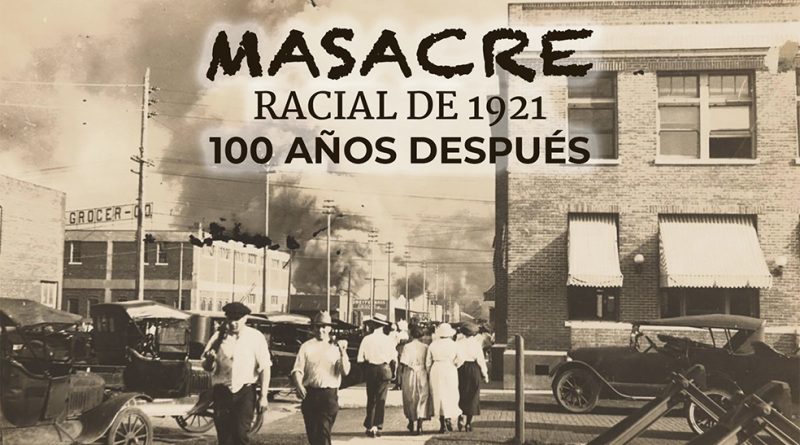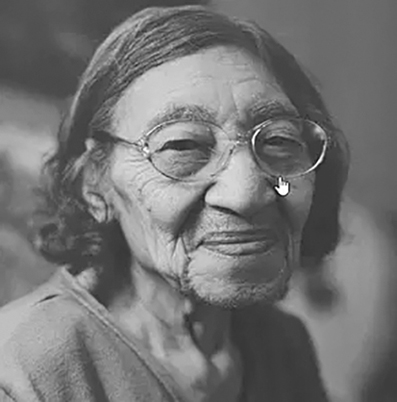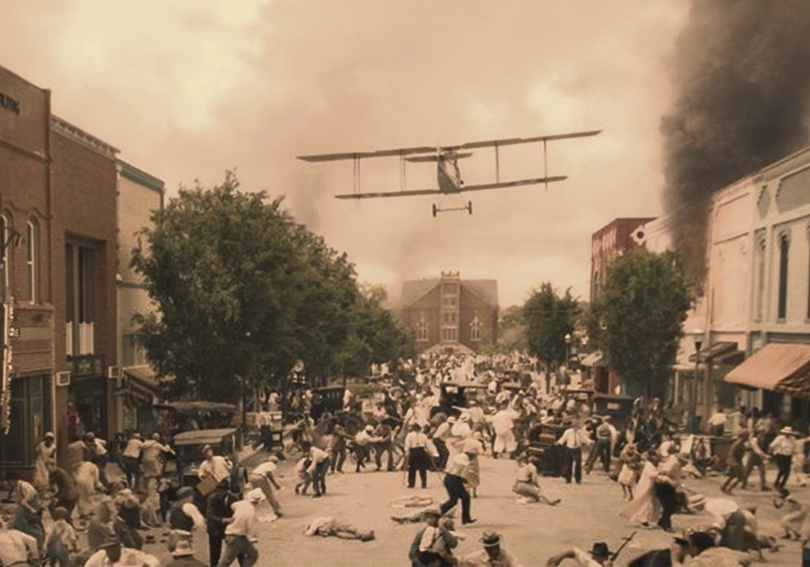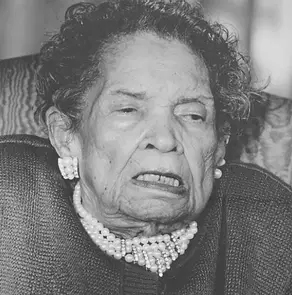1921 Race Massacre, 100 years on
Por William R. Wynn | TULSA, OK
Hace 100 años, el 31 de mayo y el 1 de junio de 1921, una escena tan horrible que casi parece surrealista se desarrolló en el centro de Tulsa y el distrito de Greenwood, un vecindario próspero conocido a lo largo y ancho como “Black Wall Street”. Pero lo que sucedió en esos dos días fue demasiado real para los hombres, mujeres y niños que fueron aterrorizados, asesinados o dejados sin hogar por una turba blanca racista y sanguinaria en lo que la historia ha llamado “La Masacre Racial de Tulsa de 1921”. Ahora, mientras la ciudad de Tulsa enfrenta su oscuro pasado en el centenario de la masacre, los sobrevivientes y descendientes de aquellos que perdieron sus hogares, negocios y familiares en el vergonzoso evento siguen sin recibir compensación y luchando por encontrar un cierre.
Comenzó como un intento de linchar a un joven negro falsamente acusado de atacar a una mujer blanca en un ascensor del centro, y aunque el linchamiento se evitó, la violencia se extendió desde las escaleras de la cárcel hasta el cercano distrito de Greenwood. En la mañana del 1 de junio, la turba blanca enloqueció, disparando indiscriminadamente, saqueando y quemando. Los relatos de la violencia detallaron los horrores espeluznantes a los que fueron sometidos los residentes, con el terror lloviendo desde el cielo mientras bolas de trementina en llamas caían desde aviones sobre los techos de casas, negocios e iglesias. Hubo más de 300 personas asesinadas, miles quedaron sin hogar y casi 40 acres quedaron reducidos a escombros ardientes.
Sólo tres sobrevivientes de la Masacre Racial de Tulsa de 1921 siguen vivos. Contaron sus historias al congreso recientemente cuando se acercaba el centenario. Archivado en el Greenwood Cultural Center y en línea en el sitio web del John Hope Franklin Center for Reconciliation (jhfcenter.org), aquí están los recuerdos de algunos de los que vivieron este terrible capítulo en la historia de Tulsa.
Ernestine Gibbs | Nacimiento: 15 de diciembre de 1902
“Un amigo de la familia vino de un hotel en Greenwood donde trabajaba y llamó a nuestra puerta. Estaba tan asustado que no podía quedarse quieto ni acostarse. Simplemente caminaba de un lado a otro del piso hablando del “lío” que estaba ocurriendo en el centro de la ciudad y en Greenwood. Cuando llegó la luz del día, la gente negra se movía por las vías del tren como hormigas. Nos unimos a la gente que huía. Durante este frenesí de huida, llegamos a Golden Gate Park cerca de 36th Street North. Tuvimos que correr desde allí porque alguien nos advirtió que los blancos estaban disparando a los negros que huían por las vías del tren. Algunos de ellos fueron baleados por personas blancas disparando desde aviones. El 1 de junio de 1921, los guardias nos encontraron y nos llevaron al recinto ferial. Volver a Greenwood fue como entrar en una zona de guerra. ¡Todo había desaparecido! La gente se quejaba y lloraba cuando miraba donde estaban sus casas y negocios. Nunca lo olvidaré. ¡No, nunca!”.
J.B. Bates | Nacimiento: 13 de junio de 1916
“Solo tenía cinco años, demasiado joven para saber el significado de un motín, pero recuerdo que mi madre estaba tan asustada que supe que algo andaba terriblemente mal. La milicia detuvo a papá y a mis tíos. Mientras la milicia estaba ocupada llevándose a los hombres de la familia, mi madre se escapó con mi hermana Roxanna y yo y corrió a esconderse en un gallinero. Con nosotros, estaba un anciano en un bastón. ¡Mientras corríamos, un avión voló muy bajo y alguien en el avión disparó y mató a ese anciano! Mi madre hablaba a menudo de los disturbios, pero mi padre nunca hablaba de eso”.
Beulah Lane Keenan Smith | Nacimiento: 20 de mayo de 1908
“Los mafiosos habían hecho un agujero en el costado de la tienda y le habían prendido fuego. Ese fue el día más triste de mi vida. Ese motín nos quitó la inocencia de la infancia. Los sueños de mi vida también fueron destruidos por ese motín. De hecho, había decidido convertirme en maestra de escuela cuando fuera mayor. Pero ese motín puso fin a eso. Perdimos todo en los disturbios y tuve que dejar la escuela para trabajar y ayudar con el apoyo familiar”.
Estas son solo algunas de las trágicas historias recordadas por los que lograron sobrevivir a esos dos días inimaginables y las dificultades que siguieron. Lamentablemente, como han demostrado los acontecimientos de los últimos años, este país todavía no ha aceptado el tema del racismo. Esperemos que no tome otros cien años. (La Semana)
1921 Race Massacre, 100 years on
By William R. Wynn | TULSA, OK
100 years ago, on May 31st and June 1st on 1921, a scene so horrific it almost seems surreal unfolded in downtown Tulsa and the Greenwood District, a prosperous neighborhood known far and wide as “Black Wall Street.” But what took place over those two days was all too real for the men, women, and children who were terrorized, killed, or left homeless by a racist and bloodthirsty white mob in what history has called “The 1921 Tulsa Race Massacre.” Now, as the City of Tulsa confronts its dark past on the centennial anniversary of the massacre, the living survivors and descendants of those who lost their homes, businesses, and family members in the ignominious event remain uncompensated and struggling to find closure.
It began as an attempt to lynch a young black man falsely accused of attacking a white woman in a downtown elevator, and although the lynching was prevented, the violence spread from the steps of the jail to the nearby Greenwood District. On the morning of June 1st the white mob ran amok, shooting indiscriminately, looting, and burning. Stomach turning accounts of the violence detailed the grisly horrors residents were subjected to, with terror raining from the sky as flaming turpentine balls were dropped from airplanes onto the roofs of houses, businesses, and churches. When it was over 300 people had been murdered, thousands left homeless and nearly 40 acres reduced to smoldering rubble.
Only three survivors of the 1921 Tulsa Race Massacre are still alive today. They told their stories to congress recently as the centennial approached. Archived at the Greenwood Cultural Center and online at the John Hope Franklin Center for Reconciliation website (jhfcenter.org), here are the recollections of some of those who lived through this terrible chapter in Tulsa’s history.
Ernestine Gibbs | Born: December 15, 1902
“A family friend came from a hotel on Greenwood where he worked and knocked on our door. He was so scared he could not sit still, nor lie down. He just paced up and down the floor talking about the ‘mess’ going on downtown and on Greenwood. When daylight came, black people were moving down the train tracks like ants. We joined the fleeing people. During this fleeing frenzy, we made it to Golden Gate Park near 36th Street North. We had to run from there because someone warned us that whites were shooting down blacks who were fleeing along railroad tracks. Some of them were shot by whites firing from airplanes. On June 1, 1921, we were found by the guards and taken to the fairgrounds. Going back to Greenwood was like entering a war zone. Everything was gone! People were moaning and weeping when they looked at where their homes and businesses once stood. I’ll never forget it. No, not ever!”
J.B. Bates | Born: June 13, 1916
“I was only five years old, too young to know the significance of a riot, but I do remember that my mother was so frightened that I knew that something was terribly wrong. The militia took dad and my uncles to detention. while the militia was busy taking the men in the family away, my mother slipped away with my sister Roxanna and me and ran to hide in a chicken house. With us, was an old man on a walking stick. While we were running, an airplane flew over real low and someone in the plane shot and killed that old man! My mother often talked about the riot, buy my dad never talked about it!”
Beulah Lane Keenan Smith | Born: May 20, 1908
“Mobsters had kicked a hole in the side of the store and had set it on fire. That was the saddest day of my life. That riot cheated us out of childhood innocence. My life dreams were destroyed too by that riot. In fact, I had made up my mind to become a school teacher when I grew up. But that riot put an end to that. We lost everything in the riot, and I had to drop out of school to work and help with family support.”
These are just a few of the tragic stories recalled by those who managed survive those unimaginable two days and the hardship that followed. Sadly, as the events of recent years have proven, this country has still not come to terms with the issue of racism. Hopefully it will not take another hundred years. (La Semana)









Debe estar conectado para enviar un comentario.